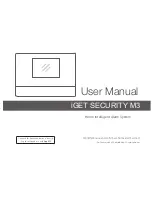
Manual LC10-*
Product Description
2
0
1
6
-1
1
7
3
Product Description
3.1
Overview
Together with the inductive loops laid beneath the surface, the LC series loop detectors form a
universal sensor system for detecting vehicles. People are not detected. Vehicles that enter the
inductive loop change the resonant frequency. This frequency change is measured and
analyzed by the microprocessor in the LC10 loop detector. The analysis is automatically and
periodically adjusted to the respective loop, ensuring that any changes in the loop inductance
caused by temperature, humidity or component age are automatically compensated for.
The loop detectors are control units that are fully functional without the need for any other
auxiliary equipment once the power supply and an inductive loop have been connected. The
inductive loop laid below the surface forms the inductor of a high-frequency oscillating circuit.
The metal parts of a vehicle that enters or is located in this wired loop cause the frequency of
the oscillation circuit to change. This frequency change is analyzed by the loop detector, and
the outputs, which are zero-potential relay contacts, can switch. The switching outputs are relay
contacts with a high switching power that can directly control contactors, valves and alternating
current motors. The dimensions of the detection area can be adjusted by changing the size and
shape of the inductive loops.
Figure 3.1
LC10-1 (left) and LC10-2 (right) loop detectors
3.2
Use and Application
Possible areas of application for the LC10-* series loop detectors are:
■
Selective vehicle detection
■
Opening impulse sensor for automatic gates and barrier systems
■
Presence checks for vehicles
■
Direction-specific vehicle checks
■
Controlling traffic light and vehicle detection systems
■
Ticket detection in parking garages
■
Managing tasks in automatic conveyor systems





































